|
Edmund White died June 3, after a long and much-loved life as one of America’s great gay writers. His 1982 autofiction novel A Boy’s Own Story is his best known, a frank and honest story of growing up gay in the 1950s. Many gay men (including myself) found themselves in that book and the ensuing trilogy. He published 36 books including memoirs, autofiction, novels, historical treatments, and the 1977 Joy of Gay Sex. He is a foundation stone of gay English writing. He always saw himself as a gay writer for gay readers, the distinction he drew between his generation of queer writers and those who came earlier, like Gore Vidal and James Baldwin. They might write gay characters, but they never seemed to be writing for gay readers. Ed was. … Edmund White had no use for shame, and in both life and work, he refused to sand down the edges of queer existence to make it palatable. Acceptance was never the point. Truth was. I’ve been mourning his passing these past few days. I didn’t know him personally but his writing and presence have been meaningful to me, particularly as I evaluate my middle-aged gay life. Some suggested reading:
This was also posted to Metafilter
I took an amazing trip to SE Asia last month, including Angkor Wat. I had a hard time finding good reading or other resources to learn from before I went, in part because Amazon is awash in AI garbage. Here’s some books and podcasts I found useful about the Khmer empire in general and Angkor in particular: Ancient Angkor by Michael Freeman and Claude Jacques. The closest thing to a coffee-table book to preview what you will see. The practical information is outdated but the pictures and descriptions are good. Empire Podcast #185: The God Kings of Angkor Wat by William Dalrymple and Anita Anand. An entertaining and fully detailed account of the Khmer empire. It’s basically an excerpt from Dalrymple’s new book The Golden Road: How Ancient India Transformed the World. Fall of Civilizations Podcast #5: The Khmer Empire by Paul Cooper. Another history, not quite as magically well told as Dalrymple but full of good information. Angkor and the Khmer Civilization by Michael D. Coe. A highly recommended history of the Khmer region. Honestly I found this very dry and too detailed, but I did learn from it. Lonely Planet Pocket Guide: Siem Reap & the Temples of Angkor. We didn’t use this much but it seemed like a useful practical guide. OTOH it dates to 2018 so things have changed. My other advice for visiting Siem Reap and Angkor is: go. It is amazing. Plan for at least two full days of touristing there. Hire a private guide and driver if you can, it is absolutely worth it. (Email me for a recommendation.) I’ve been doing Dry January this year. One thing I missed was something for apéro hour, a beverage to mark the start of the evening. Something complex and maybe bitter, not like a drink you’d have with lunch. I found some good options. Ghia sodas are my favorite. Ghia is an NA apéritif based on grape juice but with enough bitterness (gentian) and sourness (yuzu) to be interesting. You can buy a bottle and mix it with soda yourself but I like the little cans with extra flavoring. The Ginger and the Sumac & Chili are both great. Another thing I like are low-sugar fancy soda pops. Not diet drinks, they still have a little sugar, but typically 50 calories a can. De La Calle Tepache is my favorite. Fermented pineapple is delicious and they have some fun flavors. Culture Pop is also good. A friend gave me the Zero book, a drinks cookbook from the fancy restaurant Alinea. This book is a little aspirational but the recipes are doable, it’s just a lot of labor. Very fancy high end drink mixing, really beautiful flavor ideas. The only thing I made was their gin substitute (mostly junipers extracted in glycerin) and it was too sweet for me. Need to find the right use for it, a martini definitely ain’t it. An easier homemade drink is this Nonalcoholic Dirty Lemon Tonic. It’s basically a lemonade heavily flavored with salted preserved lemons, then mixed with tonic. I love the complexity and freshness of this drink and enjoy it on its own merits. Finally, non-alcoholic beer has gotten a lot better in the last few years thanks to manufacturing innovations. I’ve been enjoying NA Black Butte Porter, Stella Artois 0.0, Heineken 0.0. They basically all taste just like their alcoholic uncles, no compromise. One thing to note about non-alcoholic substitutes is they are not cheap. They’ve become a big high end business. Expect to pay the same for an NA drink as one with alcohol even though they aren’t taxed nearly as much. 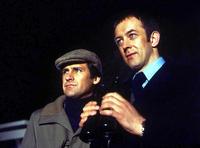
I just finished an extraordinary late-70s TV show, The Sandbaggers. It’s British spy TV. While the show name-checks James Bond frequently the soul of it is more of a Le Carré thing. Intelligence as a series of dismal political battles between underpaid civil servants at the home office. Occasional forays into the field where everything is squalid or ambiguous and nothing grand is ever achieved. The show hangs on Roy Marsden’s performance as Burnside, the Director of Operations at a British intelligence agency. The titular Sandbaggers are field agents, vaguely like the Bond 00 agents, but there’s never any swashbuckling action or romance. Occasional gritty affairs and some grim minor violence, all done on a low budget and with precious few location shots. If you ever enjoyed Blake's 7 or early Doctor Who the low production values will be familiar. So will the excellent quality of the writing and characters, there’s a lot of complexity and subtlety and more than a few surprises. Mostly the show has aged well. It’s firmly set in late Cold War, there’s no hint of the extraordinary transition that happens in the 80s as the Soviet Union fell apart. Unfortunately the show is unimaginatively sexist with a lot of “men hitting on women in the workplace” nonsense. There’s one good female character in part of the show and Burnside’s secretaries are both good actresses with some sharp writing. But it feels dated even for its time. I appreciated watching something at a slower and more thoughtful pace. I think the show is ripe for a reboot. Keep it set in the Cold War with roughly the same stories. But update the show: write better women and modernize the production. Then branch out and tell some new stories in Asia or South America or Africa. You can watch a licensed copy in the US on britbox. We recently took the Transcantábrico, a week long luxury train trip across Northern Spain. It was great! Like a cruise but on a train. We did something similar in India in 2015 and it’s an interesting way to travel. Some photos here. The Transcantábrico goes across a part of Spain a little off the usual tourist track. From Santiago de Compostela through the mountains south of the coast to Donostia / San Sebastián. Along the way we saw towns I never would have gone to on my own: Gijón, Potes, and Santillana del Mar were particularly memorable. Also some beautiful nature including Cathedral beach in Gallegos and Hermida Gorge in the Picos de Europa. The excursions from the train were well organized with a very nice bus and guides. The hospitality on the train was terrific. Our “cruise director” Cristina was particularly amazing, friendly and knowledgeable. All the staff were great and very accommodating. Maybe 12 people helping 25 guests. Meals on the train were excellent and comfortable. Most days breakfast and dinner were on the train, lunch was out. The restaurants were all high quality but variable and honestly just too much food. The highlight was El Corral del Indianu. 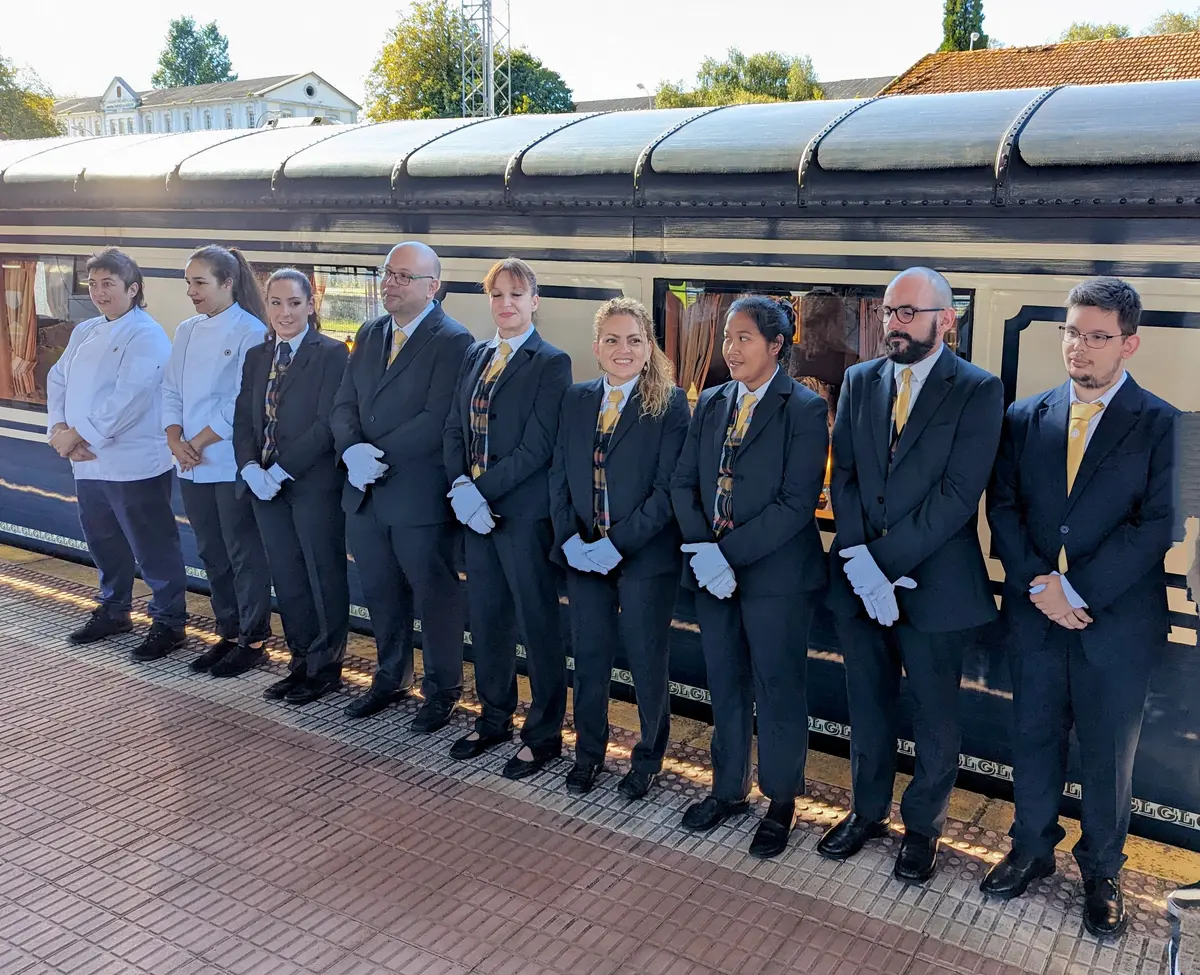 Living on a train has its limitations. The private shower was very nice with lots of hot water but you’re still washing in a telephone booth. The queen size bed was comfortable but in a very tight space, we wished we’d booked two single beds. And getting around the train was difficult (you have to move sideways in the corridor), particularly when the train was moving. After a week I was ready to be back in a normal hotel. OTOH it was beautifully furnished and it was great being unpacked and taken care of so well. I’d definitely do another luxury train. But maybe fewer days. The key thing is the itinerary, the places to go. That was amazing in India, a week long trip from Delhi to Mumbai. Spain was beautiful and I appreciated going slowly through a place off the beaten track with knowledgeable local guidance. Rewarding trip! PS: if you want to see more, Mighty Trains S04E02 is about the Transcantábrico. Social media businesses should not charge* for APIs. If a company like Reddit or Twitter derives most of its value from content that users write for free then it must provide APIs for anyone to download and manipulate that content. While an interactive API that enables third party applications is desirable, a simple static dump is the bare minimum to fulfill the social contract (see StackOverflow or Metafilter for examples.) Unfortunately Twitter and Reddit don’t agree. They are both rent seeking with their APIs. Their main intent is to destroy third party apps that no longer aid the company’s business goals. But they’re also trying to make a few million bucks a year licensing access to data, particularly on the back of AI training. It’s wrong. The key thing here is social media sites don’t produce content. They merely host it. Millions of users create the content expecting it will be widely available. Locking down an API breaks that social contract. Honestly I don’t care as much about full fledged third party clients like Apollo or Tweetbot; I like them but I understand why the companies want to kill them. What I care about more are analytics sites, things that provide interesting alternative views like a Reddit user profile or Emoji tracking. I also think it is the greater good to let AIs train for free. *I don’t mind a site charging a nominal fee for API access. Either to cover the cost of API service itself, or more importantly to encourage API developers to be efficient when making API requests. But that's hundreds to thousands of dollars a year, not millions. The short sighted thing about these API fees is they will harm the company in the long term. If it becomes difficult to use a proper API to get at content folks will simply screen scrape it instead. That’s bad for everyone. I’ve been listening to the same music every night when I go to sleep 10+ years now. Weird endorsement; I’ve listened to it with more attention plenty of times too. But it’s particularly good for going to sleep; calm, interesting, and comfortably familiar. That music is GAS, Werner Voigt’s ambient techno project (Bandcamp, Youtube). The primary collection is Nah und Fern, four albums that were made over 1996–2000. In 2017 he released a new GAS album, Narkopop. Followed in 2018 by Rausch and 2021 Die Lange Marsch (a sort of remix). I like the first four most. Ambient music is pretty hit or miss. For every brilliant work like Music for Airports or Aphex Twin’s early music there’s a zillion gormless electronica and “earth fart” recordings that fail to inspire. Furniture music is supposed to be in the background, sure. But still high enough quality to be appreciated. GAS succeeds. It has just enough of a beat (sometimes) to make time flow without being overwhelming like regular techno or something rhythmically complex like Autechre. The sounds are richly textured with a bit of fuzz and noise to make it organic. And I like the slightly broody or sinister tone. Not scary, but they make me happy I’m snug in my home under the blankets. Ken and I just got back from a 23 day trip exploring most of Austria. We had a lovely time although we did get a little worn out and ready for home after a couple of weeks. Along the way we stayed in Vienna, Graz, the Wörthersee, Zell am See, Innsbruck, Salzburg, Hallstatt, Linz, and Dürnstein. A nice mix of cities and countryside. I tweeted a bunch of postcards, easily viewed here and here. 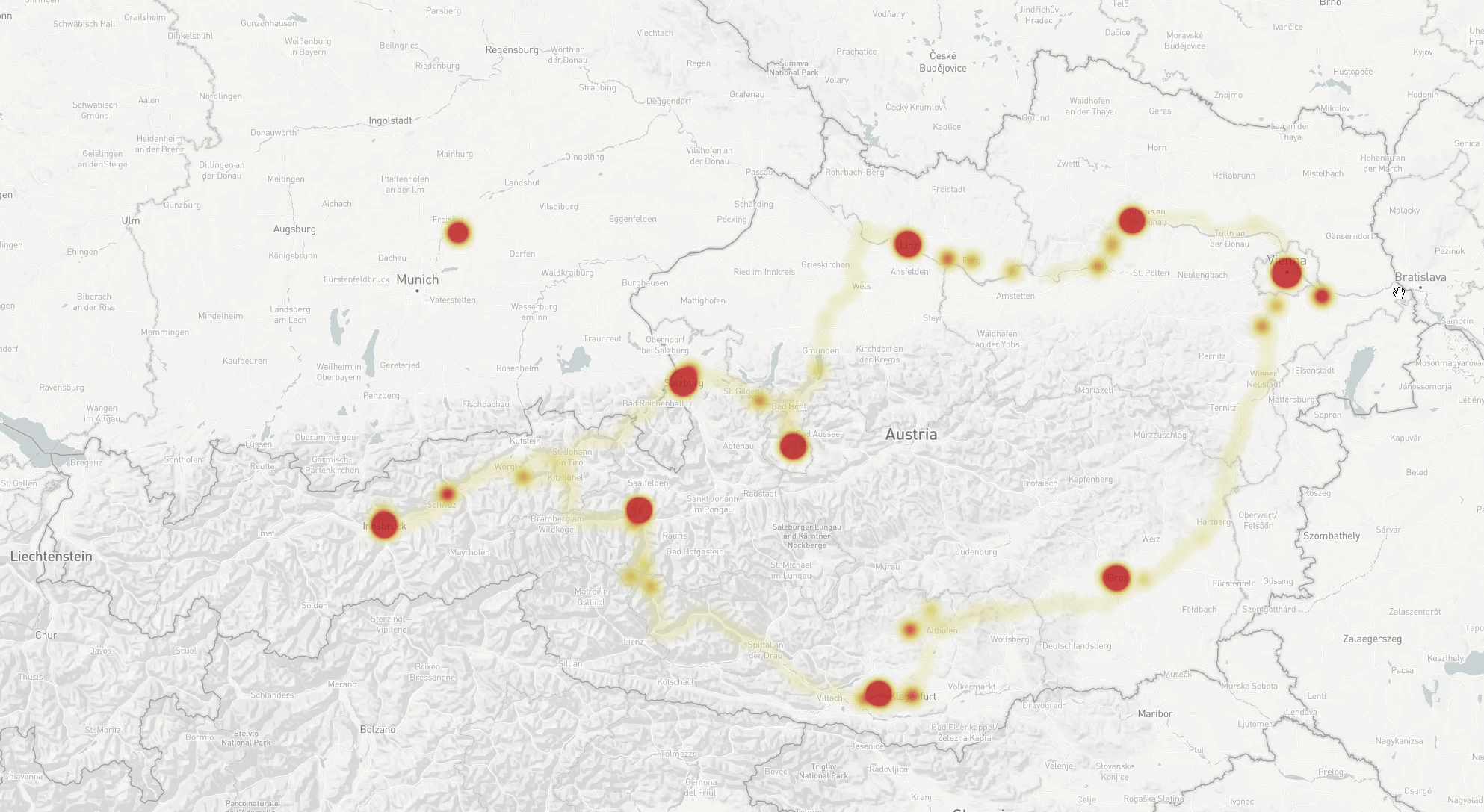 My favorite places were the town of Graz and the countryside in the south from the Wörthersee through Zell am See to Innsbruck. The drive over the Grossglockner Alpine Road was a particular highlight and the lush green alpine valleys of Styria, Carinthia, and Tyrol were just a delight. Salzburg was also a very good visit. Linz was an industrial disappointment and Hallstatt was tourist hell; skip it unless you are very interested in the archaeological story. We ate very well on this trip; Austrian cuisine is more interesting than the schnitzel-and-boiled-beef that was my stereotypical view. Lots of fresh fall ingredients. The pumpkin cream soup was particularly good. Enhanced with Kürbiskernöl, pumpkin seed oil that's deliciously nutty and green tasting. And of course plenty of fantastic sweets; the French call pastry viennoiserie for a reason. The single best meal we ate was at Pfefferschiff in Salzburg. Drama in #PlotterTwitter this week: someone cloned Lingdong Huang’s generative art project to sell as an NFT, without permission. (Website screenshot here). The code had an MIT license so this was technically allowed but there’s something obviously wrong in selling an artist’s work without their agreement. The artist denounced the NFT as a sham. The community also condemned the appropriation. Fortunately the NFT creator cancelled the project with a thoughtful explanation. So the crisis is over but it’s left behind some complex questions about open source licenses, commercialization, and computer generated art. 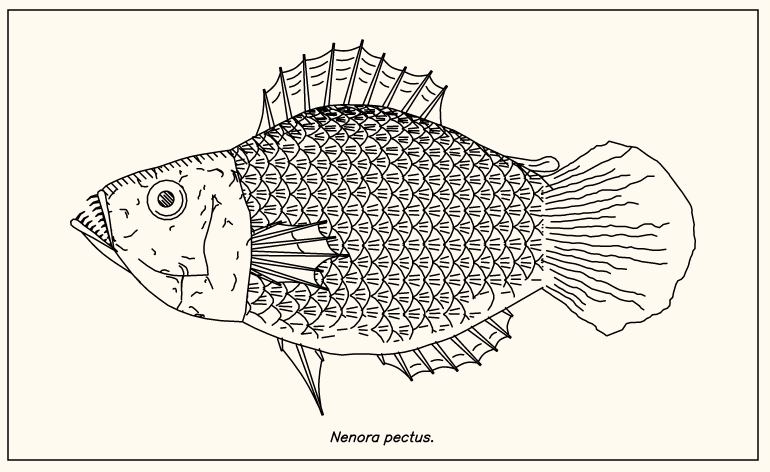
Generative art code is different from other programs. With art the output of the code often has more value than the code itself. Run the program and get an art piece: it’s the art piece that is the focus. Art code is often one-off and specific, not a reusable component like a database or math library. But the source code can be valuable as a teaching aid or as a basis for someone to remix and make their own art. The generative art world is also full of library components that artists share. Perlin noise is a great example, a random number function so famous it won its creator an Oscar. The Perlin noise algorithm was published for free reuse and there are many open source implementations. I believe no one thinks artists should pay Ken Perlin royalties or even explicitly credit him in their artworks. But we are all grateful to have access to his tool. Same goes for more technical libraries like font renderers, shape drawers, or code that renders SVG or drives a plotter. They are useful tools for making art but they do not make art by themselves. Open source licenses handle this kind of utility code pretty well. The problem is for code that itself creates art. Of course releasing code at all is the artist’s choice: what’s the goal of an open source release? I think many artists do it mostly out of a sense of it being a public good to share methods. There was an interesting discussion about how this does not necessarily require full code: "People are forced to learn by re-implementing, and discovering their own style, rather than copying mine." I feel that strongly myself when I look at other people’s art code. There’s little joy in just reproducing someone else’s art, the creativity is in making your own. But it can help to have working code to run and modify, borrow ideas from. Unfortunately there’s money in appropriating someone else’s art code. The NFT market has greatly accelerated the commercialization of generative art. And while that can be good for artists it also attracts cryptohucksters with divergent ethics. I’m still hoping the whole idea of NFTs (and cryptocurrencies) blows up and disappears but until it does artists should be thinking about how to protect themselves from unwanted and aggressive exploitation. So where do we go from here? My problem-solving nature wants to create a new software license that lets artists feel safe releasing their code. Existing open source licenses don’t protect against exploitation, the open source world has firmly rejected the idea of non-commercial licenses. The CC-NC license family is good for artistic works like photographs and written works but they are not recommended for software. I think we’d need a new license. Even if the code license works it’s not clear you can copyright the output of code. So that’s a problem. One easy thing to do now is have more discussion about how the generative art community thinks about others reusing their work. There’s a nice essay about open source hardware community norms, I’d like to see something similar for art code. I know enough about open source licenses and art to participate but the conversation needs to be driven by working artists. I think there’s some value in exploring more of how generative art code is unique in that it creates art, but is not just a tool nor is it the art itself. Generative art has always been full of unresolved tension about authorship, now doubled down with complex algorithms like VQGAN and CLIP. Commercialization is an aspect of the authorship question. Thanks to the Drawing
Bot Discord for thoughtful discussion that informed this blog
post.
Subnautica is one of the best games I’ve played in a long time. It marries a good narrative with excellent gameplay and a rare balance of complex game systems. It’s beautiful too and a nice mix of the pleasure of a well scripted game embedded in what looks like a complex naturally generated world. The rest of this post has lots of spoilers. It’s been five years since the game came out but if you haven’t played it yet I urge you to consider stop reading this post and play it instead. 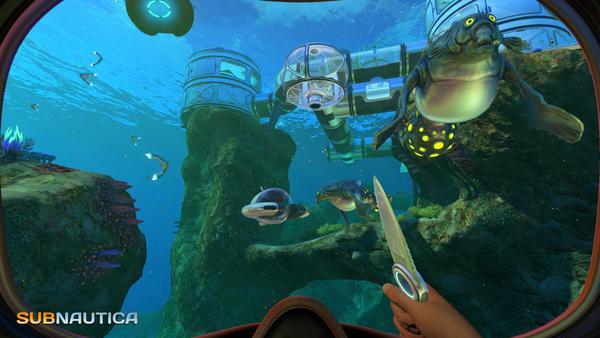 My first comparison for Subnautica is Firewatch. Yeah, it’s a weird comparison, but it’s more than just a similar rendering style. Both games have a very strong narrative arc, a beginning to an end. Both games plop you alone in the middle of an unknown world with mysteries to explore. And both rely on a sense of wonder, occasional fear, and beauty. But while Firewatch is a great story it’s barely a video game, it’s the quintessential walking simulator. Subnautica manages to deliver both an excellent scripted story and have great gameplay. The primary gameplay loop in Subnautica is survival crafting games. It’s often compared to Minecraft, Don’t Starve, No Man’s Sky. It’s a fair comparison, a lot of your time in Subnautica is spent finding resources and using them to progress along a tech tree so you can explore more dangerous and rewarding parts of the game. But those other games often end up becoming very resource heavy, rewarding collecting enormous amounts of materials for mass production. Subnautica’s crafting game is much tighter. You only need a few items of each type to build something and you typically only build one thing of that type: one weapon, one upgraded oxygen tank, one Seamoth. You do end up making a lot of food and water but even that is nicely constrained; about a third of the way through once you get one planter full of Marblemelons you’re basically set for life. I love the subtlety of the tech upgrade tree, how awkward the advanced items are. Most games give the player a power fantasy, by the time you get all the best gear in Minecraft you’re god-tier power. But in Subnautica you never get anything very powerful. You basically never get weapons or armor that let you feel safe from the sea monsters, you are always running or hiding from them. The big crafting achievement in the game is the Cyclops, the big submarine. But it’s fantastically clumsy to manoeuvre and strangely vulnerable to attack. You end up spending the second half living in the Cyclops but it always feels like such an escape to jump back out and just swim free or use the Seamoth. Exploration in the game is greatly improved by the balance between generated and scripted world. When the game first came out a lot of people thought the game was procedurally generated; that was the hot topic (thanks to Minecraft and No Man’s Sky) and the world is so beautifully detailed. But no, in fact the whole world is static, it plays the same for everyone. Not great for replayability but excellent for game design. The orderly progression through biomes and depths gives them a game a lot of story telling structure. You never quite feel led by the nose but you work your way through signposted encounters: the Aurora, the Degassi bases, the Lost River, the very deeps at the endgame. That exploration is also where I had a little trouble. The game deliberately is disorienting; you’re never given a map and the mini-map like sonar images are not useful for navigating. All you get are beacon landmarks you place yourself. And the game is a 3d underwater maze, with the second half of the game entirely in cave systems! I finally gave up and used a fan-made map of the Lost River because I’d gotten a little stuck and confused. That was a big help to me. Getting lost is a big part of the game, I don’t mind that being a gameplay element. But video games are such a limited medium we don’t get to use our real-world navigation skills much. That’s why games always have HUDs and minimaps, they replace your innate sense of direction. I felt that lack a little here. Being lost in the depths of the ocean is part of the fun of the game, the occasional fear. But what really accentuates that is the sound design. The creature noises are fantastic; you’ll be cruising along picking up quartz crystals and thinking you’re safe when you hear the most terrifying moan off in the distance. Stereolocated, and you can hear it’s getting closer. Such terror! Being in the Cyclops and hearing all the creaks of the hull, the thumps as fish smack into your ship. It’s a trick as old as Das Boot but it works remarkably well in the game. Last note of appreciation for me, the end of the game. Most games like this by the time you reach the end both the player and the game designers are worn out. They’ve shown you all they have and you’re grateful just to read the final boss fight and end screen. Not Subnautica. First there’s no boss fight, that’d be totally wrong for a game with basically no fighting. Instead you have a boss… communion? Final crafting challenge? It’s great. And then, at least the way I played it, there’s a wonderful anticlimax. You’ve solved all the mysteries of the planet and are finally ready to escape but you still have to craft the rocket and take off. Which means one last trip to the surface, one last crafting challenge. I really enjoyed the feeling of scavenging my existing base and submarine for materials to use. That shield generator was hard earned and essential to my submarine survival but now I wouldn’t need it on the planet any more, time to reuse it for the rocket ship to escape. And even that rocket ship had a lot of grace notes; an elaborate launch sequence and the ability to create a time capsule. A very thoughtful farewell in a place most games would just have a single "you win" button to press. Subnautica really is a masterfully crafted game from start to end. Depth, complexity, beauty. A good story and great gameplay systems to support it. Quite an achievement. |
||
